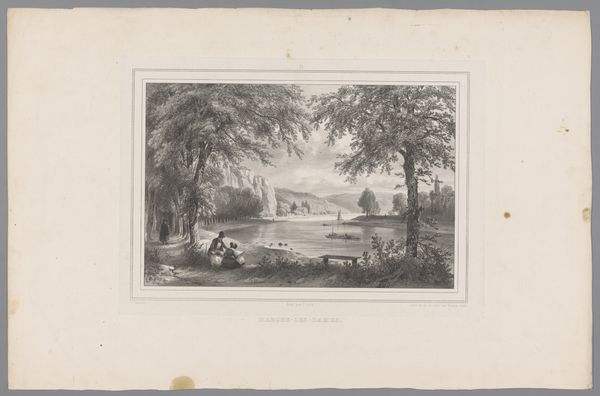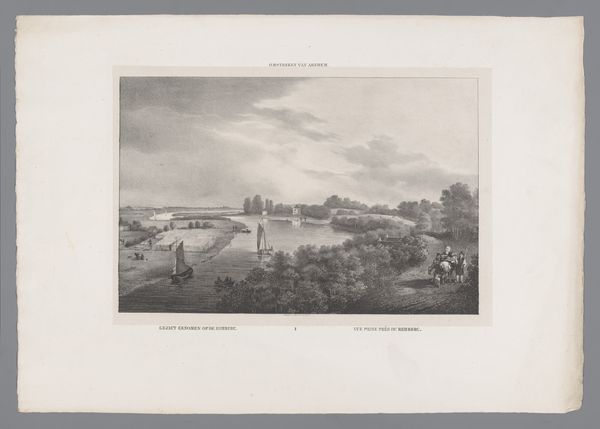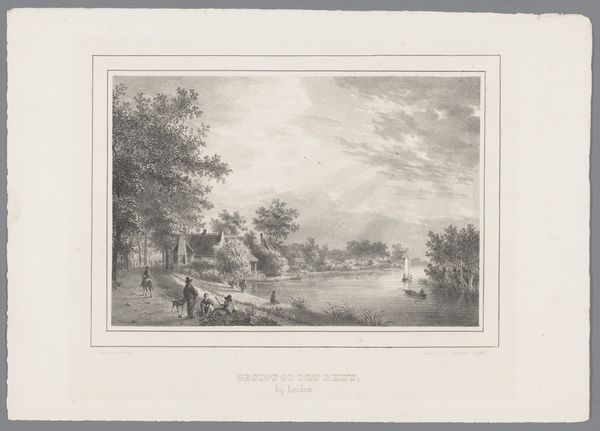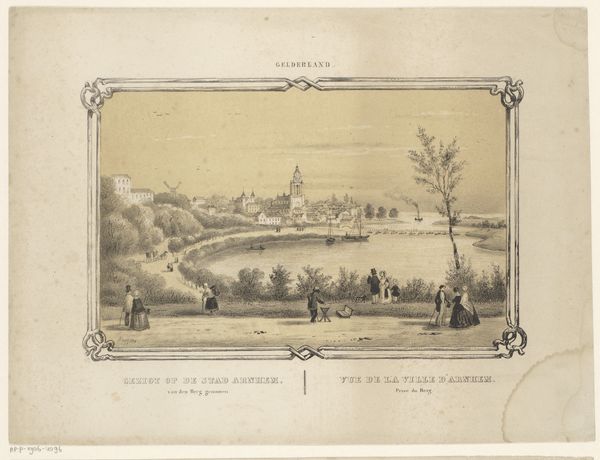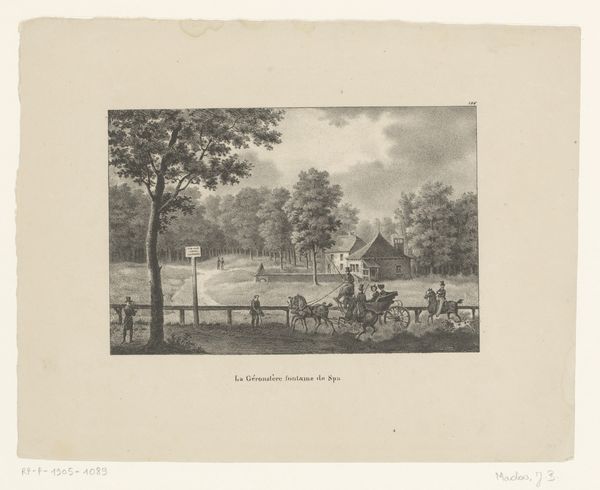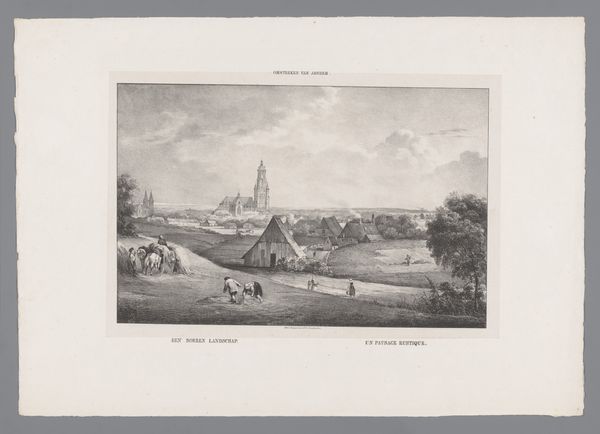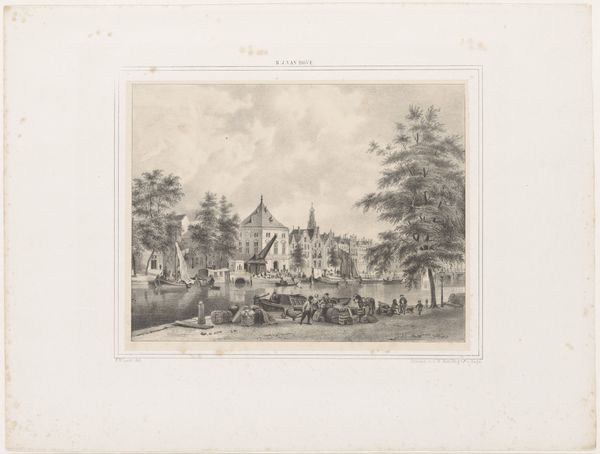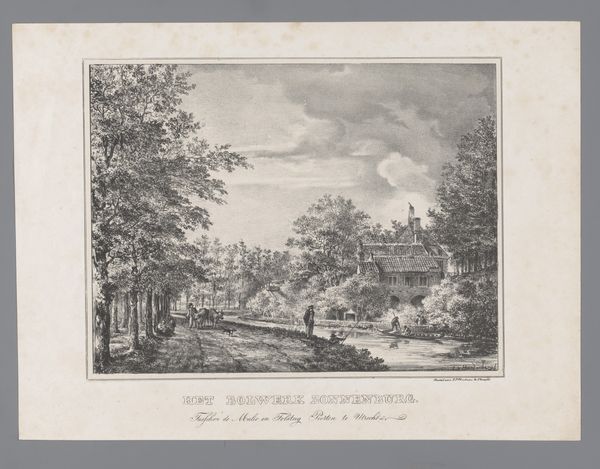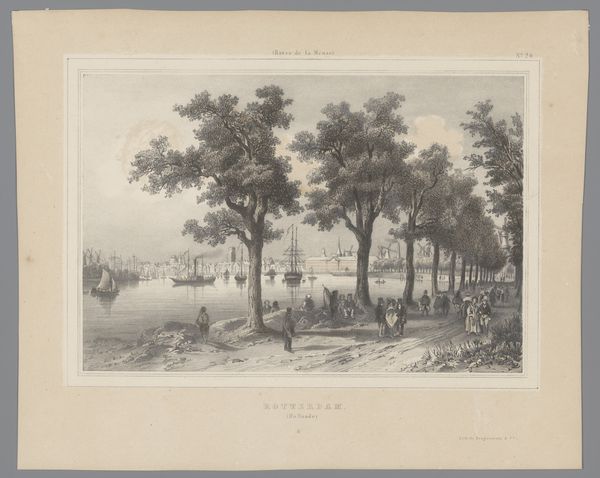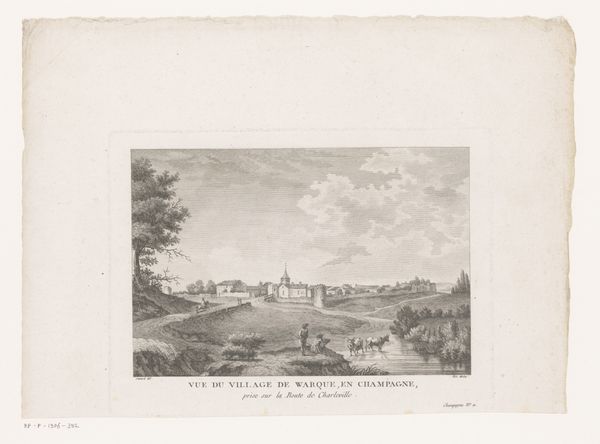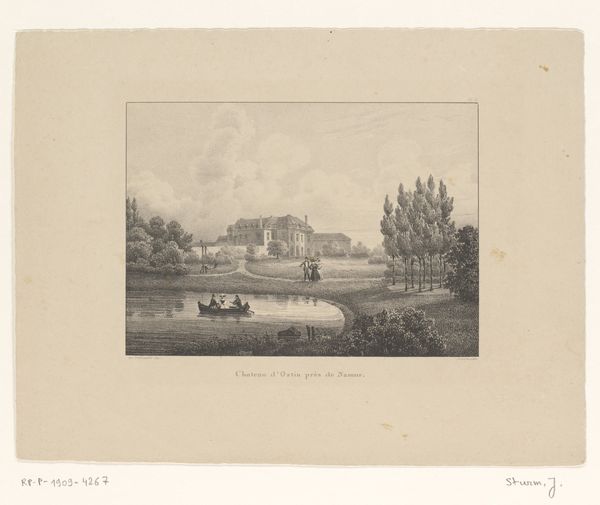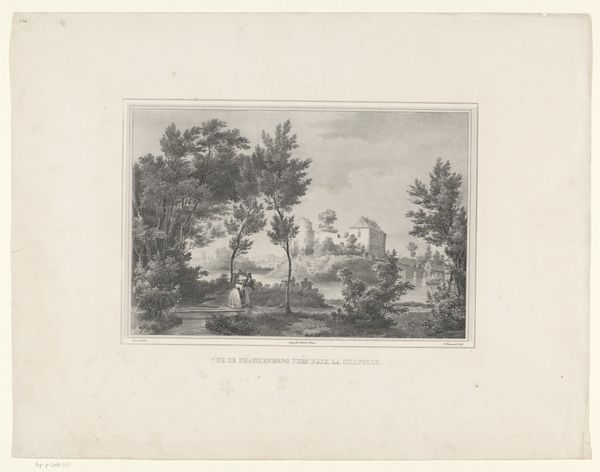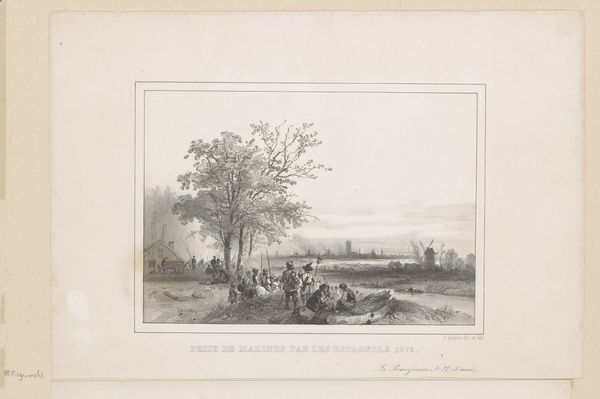
print, paper, engraving
#
aged paper
# print
#
landscape
#
paper
#
romanticism
#
cityscape
#
watercolour illustration
#
engraving
#
realism
Dimensions: height 245 mm, width 345 mm
Copyright: Rijks Museum: Open Domain
Curator: Let's discuss "Leidsche Academie," an engraving on paper by Wilhelmus van Groenewoud, dating back to 1834. It's currently held at the Rijksmuseum. Editor: My immediate impression is of quiet bourgeois domesticity framed against this looming seat of knowledge. It's like two worlds colliding, almost self consciously staged, but rendered with a certain gentle wistfulness. Curator: Indeed. I find it compelling to view it through a lens of social power structures at the time. The location of the Academy reflected more than just intellectual aspirations; it also reinforced socio-economic privilege. Editor: I see your point. Education, especially at that level, was clearly not universally accessible. But I’m drawn to the picturesque framing—the family, the water's edge. Is it perhaps an appeal to a new kind of patron or social actor, a family interested in participating in civic life through something other than revolution? Curator: It could certainly be interpreted that way—inviting engagement within the existing framework, reinforcing a particular narrative about progress and societal contribution rooted in traditional power structures. Look at the women, what role can we gather that they are allowed to have within such system. Editor: I must confess, the scene speaks to me aesthetically— the details of the buildings mirroring in the water; the family feels natural even though, as you highlight, their existence in that space is entirely tied to institutional gatekeeping. Curator: And that tension is exactly what makes the artwork resonate even today. The representation of a selective group who had access to certain spaces contrasts against those who were excluded. Van Groenewoud’s artistry captured the socio-political dimensions within educational institutions during the 19th century. Editor: Thinking about its function and context provides so many valuable questions. Is the work a celebration, an endorsement, or an uncritical window onto Dutch society? This piece prompts a continued examination of access, representation, and the subtle politics of everyday scenes, especially in relationship to institutional power.
Comments
No comments
Be the first to comment and join the conversation on the ultimate creative platform.
